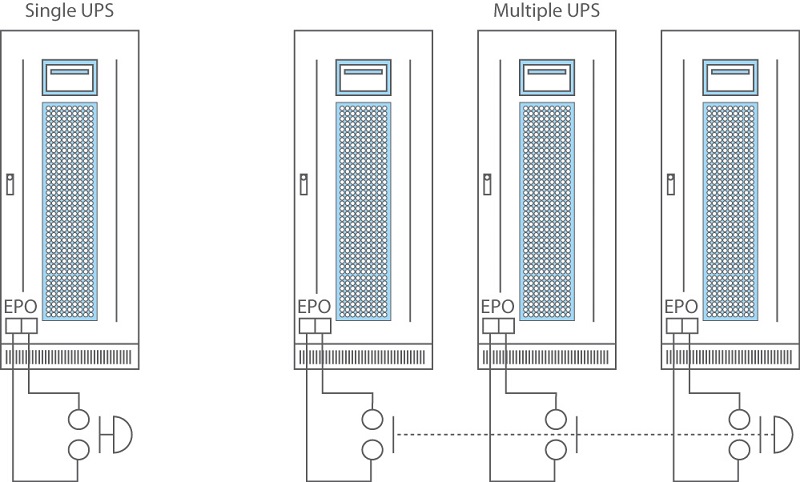Emergency Power Off (EPO) functionality enables an uninterruptible power supply and other related equipment such as generators to be remotely shut down in the event of a fire or building evacuation.
The process is known by several other terms, including Emergency Shutdown (EDS), Remote Shutdown (RSD) and Remote Emergency Power Off (REPO).
It can be controlled from a central EPO push-button, fire alarm panel or Building Management System (BMS) software and it aims to ensure there’s no risk of electrical shock when fire extinguishers or sprinklers are set off inside the room.
The EPO circuit is typically closed and will open to initiate the shutdown, which will stop the inverter and rectifier, as well as disconnecting the battery (certain cheaper EPO circuits may only stop just the inverter). Caution is needed, however, as older systems may use an open circuit, so it is important to check beforehand.
When installing an EPO circuit, it is essential to ensure the connection method used matches the type of UPS. For a single UPS unit only one switch contact is necessary. However, with a parallel UPS installation with multiple units, an individual switch contact must be provided for each of the UPSs (as outlined in the image below).

The positioning of the EPO, particularly if it takes the form of a push-button, requires careful positioning to reduce the risk of accidental or even malicious use. It is common for most EPO functionality to be monitored by CCTV.
Following an EPO, it is usual for a UPS and other affected equipment to require a manual restart.